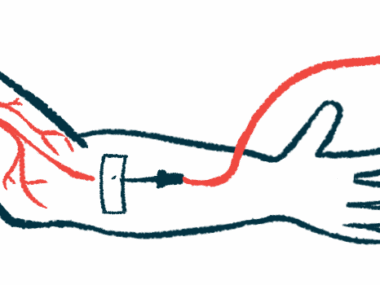Immune complement activation common in AAV disease remission
Study finds biomarkers correlate with kidney issues
Written by |

Some people with ANCA-associated vasculitis (AAV) have elevated biomarkers suggesting activation of the immune system’s complement cascade, which is known to contribute to AAV, even when they’re in disease remission, a study showed.
While these biomarkers did not appear to be associated with an increased risk of future disease relapses, they did correlate with kidney involvement and disease type.
“These findings suggest that persistent complement activation during remission in AAV may reflect underlying disease severity and organ involvement rather than predicting future flares,” the researchers wrote.
The study, “Complement factors as biomarkers in ANCA-associated vasculitis in remission,” was published in Clinical and Experimental Immunology.
AAV is characterized by inflammatory damage to the body’s small blood vessels. The disease tends to present as relapses, when symptoms worsen, interspersed with periods of remission without signs of disease activity.
Complement cascade plays role in AAV
In recent years, it has become recognized that the immune complement cascade plays a key role in AAV. When activated, it leads to immune cell accumulation and inflammatory signaling that contribute to AAV-related tissue damage.
Tavneos (avacopan), a therapy approved for certain adults with granulomatosis with polyangiitis (GPA) or microscopic polyangiitis (MPA), the most common AAV types, works by blocking an important complement protein.
It is established that complement activation is increased in people with active AAV, but some patients are found to have such complement activity even during periods of remission. The reason for this is not well understood.
Further complicating the issue is that different studies have looked at various biomarkers of complement signaling and seen different results.
“The diversity of complement activation markers, analyzed in different settings, sometimes generating contradictory results in the field of AAV research calls for a joint effort to investigate which factors could act as clinically relevant biomarkers,” the researchers wrote.
The team of researchers in Sweden set out to investigate why some AAV patients have high levels of complement biomarkers even in periods of remission.
“Our main hypothesis was that increased activation of complement in remission might be related to an ongoing, low, disease activity, indicating an increased risk of flares,” the researchers wrote. “An alternative hypothesis was that specific organ involvement, for example [kidney] impairment, might affect complement activation in different manners.”
They analyzed 147 blood samples, collected at uneven time points, from 65 AAV patients in remission (39 with GPA and 26 with MPA) during routine clinic visits at a hospital in Sweden.
Measured complement activation biomarkers spanned the different pathways through which such activation can occur: the classical and leptin pathways (Cd4), the alternative pathway (C3bBbP), and the common terminal pathway (sTCC).
Results showed that higher C4d and C3bBbP levels were significantly associated with higher sTCC levels, “indicating that different pathways are involved in the final sTCC generation” among AAV patients in remission, the researchers wrote.
More than half of the blood samples had above-normal Cd4 levels (56%, belonging to 50 patients) and elevated C3bBbP (56%, belonging to 51 patients). A smaller proportion (14%, belonging to 15 patients) had above-normal levels of sTCC.
There were no significant differences in complement activation markers between those who did or did not relapse over follow-up, nor were there differences in the biomarkers based on how many flares a person subsequently had.
“Due to the sample size and possible [masking] effect of therapy, we cannot completely rule out a connection between subclinical disease activity and complement activation, but we can conclude that the assays used do not have future as biomarkers for predicting future flares,” the researchers wrote.
Markers of kidney involvement
Blood sTCC levels during remission were significantly higher in people with MPA compared with GPA, and in people who had kidney involvement at diagnosis relative to those without.
Higher sTCC levels were also significantly associated with higher blood levels of creatinine, an indicator of kidney damage, and C-reactive protein, an inflammatory marker.
No such group differences or associations with other biomarkers were detected for Cd4 or C3bBbP.
“Different manifestations of disease might activate complement differently,” the researchers wrote, noting that there may be other patient subgroups with specific complement activation patterns that weren’t evaluated in the study.
The team pointed out that ongoing kidney scarring could contribute to complement activation even during remission, helping to explain the observed relationship between kidney involvement and the complement cascade.
For the most part, specific AAV treatments did not significantly correlate with levels of the complement biomarkers.
The researchers said these biomarkers could ultimately be used to help individualize therapeutic approaches to AAV.
“Complement activation biomarkers could potentially be used to identify patients suitable for this expensive treatment [Tavneos], and dosage might be optimized to reach favorable complement suppression with minimized risk of adverse effects,” they wrote.







